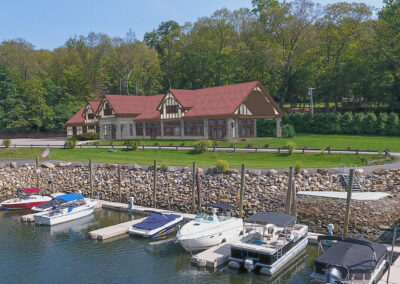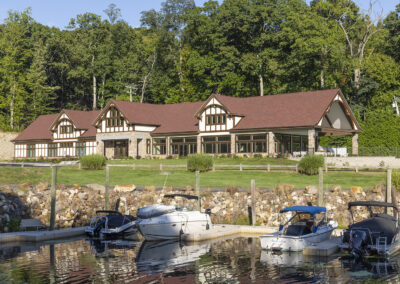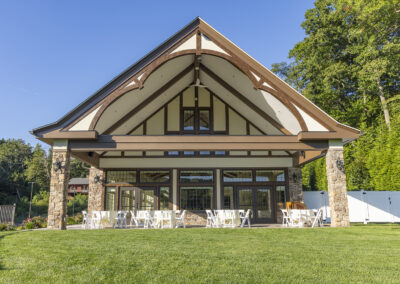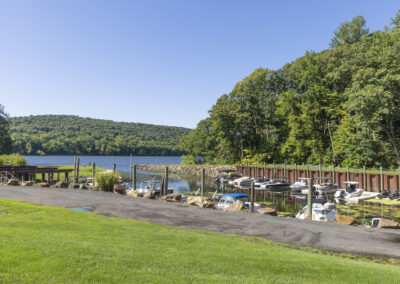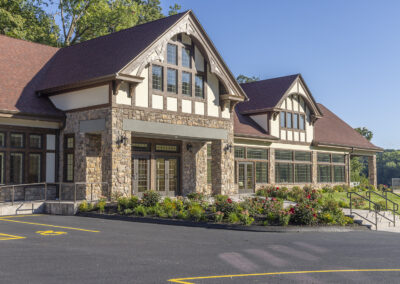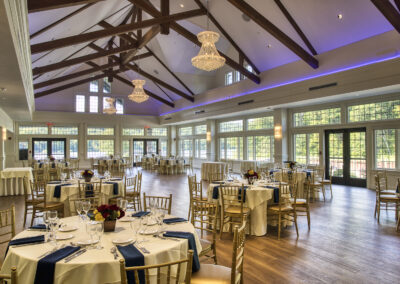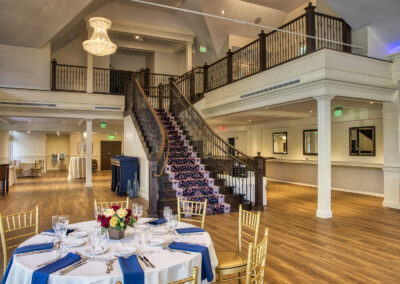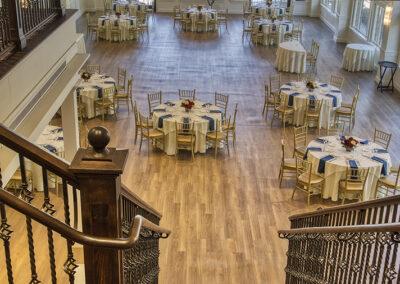River’s Edge at Saint Clements Marina
East Hampton, CT
A summer residence was built by Howard and Gertrude Taylor in 1902, named for Pope Clement 1, patron saint for sailors, near the edge of a bluff with panoramic views of the Connecticut River. Its architecture represents the re-interpretation of a Norman Manor/French Tudor house incorporating stone walls with half-timber and stucco facades, gables, and a stone tower. After decades and change of ownership, it was converted for commercial use. Phased renovations and sensitively designed expansions by Fellner Architects have been based upon the responsive need for wedding receptions, banquets, and conferences. Acquiring the adjacent marina at the foot of the bluff, the owners saw an opportunity to construct another building along the banks of the river to accommodate intimately sized events in a beautiful, serenely secluded setting.
The design intent is to offer a contemporary interpretation of the Norman Manor/French Tudor Style as a means for honoring architectural coherency. This is manifested with manufactured stone veneer and half-timbered walls, and an exterior insulation finishing system. Walls are punctuated with windows and doors, acting in counterpoint with the solid panel surfaces. The full-length gable roof which extends into a covered patio facing the river has an extended primary entry cross gable with flanking secondary cross gables. Designed for efficiency, the building has a hybrid wood and steel structural framing system. The main interior space exhibits a rhythm of wood trusses along with the grand, cascading stair from the second floor suites. In a sense, this facility offers a unique context exhibiting a healthful essence, evoking merriment as well as a tendency towards self-reflection. The objective is to create a setting for celebration which becomes part of one’s permanent memory.
Sustainable strategies include a high efficiency building envelope. The banquet area has R-36 walls and R-57 roof with cellulose insulation and detailed for acoustic control. LED Lighting and mechanical systems/controls meet energy efficiency program requirements for local utility incentives. Ultimately, the interior provides a sense of well-being, achieved by expansive natural light and exterior views. It also manifests the integration of architecture with the natural environment as one is always aware of the tranquil, picturesque exterior locale.


